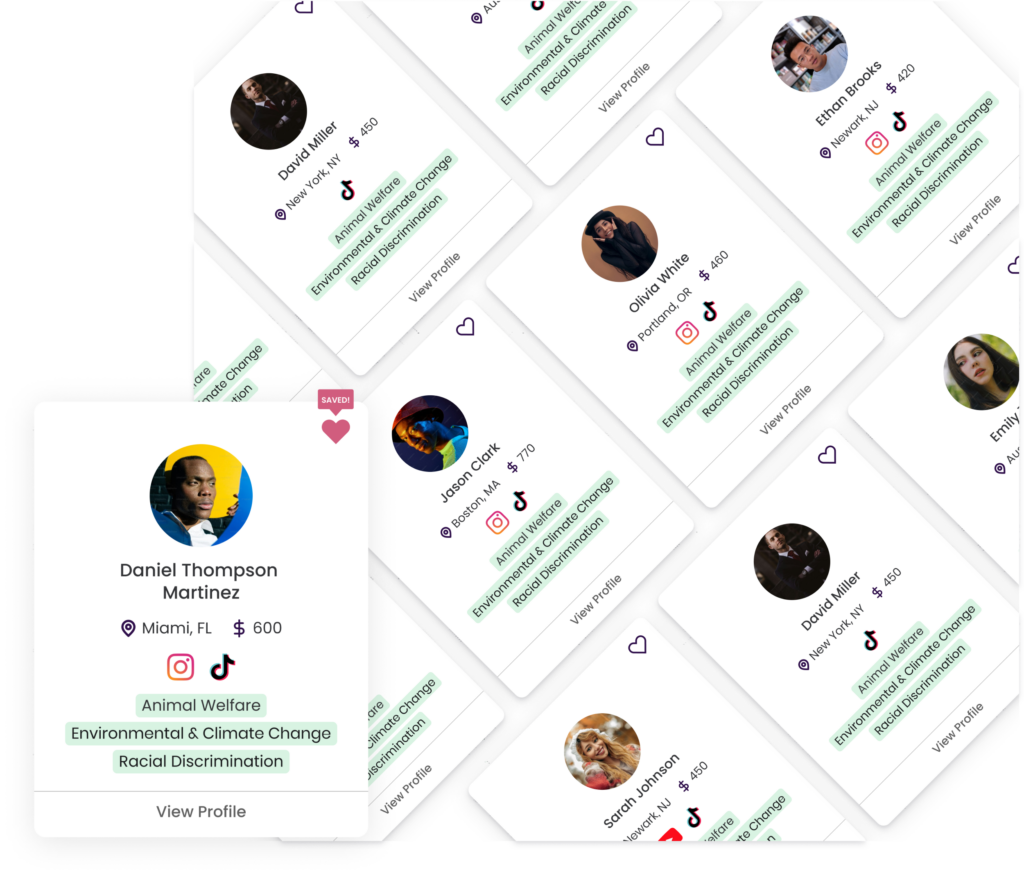In today’s digital landscape, influencer marketing has emerged as a powerful tool for organizations to connect with diverse audiences, amplify their message, and drive meaningful change. Nonprofits, in particular, can leverage the reach and influence of content creators to advance their missions and engage supporters in many innovative ways. Here’s why nonprofits should consider collaborating with influencers and some tips for successful partnerships.
What is influencer marketing?
Influencer marketing involves collaborating with individuals who have a dedicated following on social media platforms such as Instagram, YouTube, TikTok, and other platforms. Influencers, spanning from macro to micro, have established credibility, trust, and authority within their respective niches or industries. This makes them valuable partners for organizations looking to expand their reach and engagement.
Why should nonprofits work with influencers?
Partnering with influencers offers nonprofits several advantages. Firstly, influencers can help organizations reach new audiences that may not be reached through traditional marketing channels. Influencers have cultivated dedicated communities and followers who trust their recommendations and viewpoints. These audiences often span diverse demographics, interests, and geographical locations. By tapping into the existing communities and networks of influencers, nonprofits can spread awareness about their cause and attract supporters who are passionate about making a difference.
Moreover, influencers can lend authenticity and credibility to nonprofit campaigns. Unlike traditional advertising, which can feel impersonal and promotional, influencer endorsements come across as genuine recommendations from a trusted source. Influencers’ personal endorsements and storytelling abilities can humanize complex issues, making them more relatable and compelling to their followers. This authenticity can drive engagement and inspire action among audiences.
Community Change Case Study
In 2022, we teamed up with Community Change, a national organization committed to grassroots empowerment, for a project focused on electoral TikTok programming. We both shared the belief in decentralizing campaign power and amplifying the voices of those directly impacted by injustice. This involved a new approach of directly working with individuals from the communities targeted by the campaigns and encouraging them to create content that resonated authentically with their audience.
The goals of the partnership were ambitious yet focused: to create tailored and targeted content across TikTok and Instagram, reimagine traditional campaign roles, expand the ways in which campaigns communicate policy and ideas, and inspire marginalized communities to have decision-making power within the campaign. Through our combined efforts, we recruited, hired, and trained 75 creators, with 90% being young people of color. Together, we produced 127 videos addressing policy and politics, which garnered a staggering 11.5 million views and generated 1.5 million engagements.
Taking advantage of social media and influencer marketing, our partnership with Community Change exemplified how digital platforms can be harnessed to drive meaningful engagement with important social causes. By utilizing the reach and influence of content creators, we were able to not only amplify the voices of marginalized communities but also inspire action and mobilize support for critical issues. Through compelling storytelling and authentic advocacy, we sparked conversations, raised awareness, and mobilized communities to take a stand for justice and equality.
Join the FREE Webinar sponsored by Currant “Beyond the Buzz: Strategies for Nonprofits to Maximize Impact with Social Media Influencers” to learn more!
Tips & Recommendations for Nonprofits
a) Building a Ladder of Engagement with Creators: Establishing and sustaining relationships with content creators is key to long-term success. Nonprofits should invest in building a ladder of engagement, gradually involving influencers in their cause and empowering them to advocate for important issues.
b) Rapid Response with Creators: In times of crisis or urgent advocacy campaigns, working with creators on rapid response initiatives can be highly effective. Creators can help disseminate key messages quickly and reach a wide audience, complementing traditional media and organizational communications efforts.
c) Location Targeting Works, Somewhat: While location targeting can be effective, nonprofits should also consider the influence of macrocreators from specific regions. Investing in macrocreators who resonate with local audiences can amplify the impact of campaigns, especially around localized issues or events like elections.
d) Creators are Interested in Programming: Providing value and resources to creators can cultivate meaningful partnerships. Hosting educational events, briefings, and workshops can attract creators who are eager to learn and engage with advocacy organizations on important topics.
Partnering with influencers presents an exciting opportunity for nonprofits to amplify their message, reach new audiences, and drive meaningful change. By building authentic relationships with content creators and leveraging their influence, nonprofits can effectively engage supporters and advance their missions in today’s digital age.
Ready to harness the power of influencer marketing for your nonprofit?


